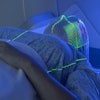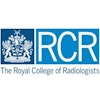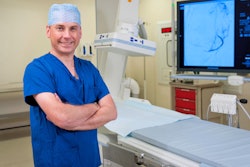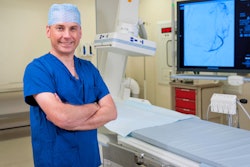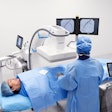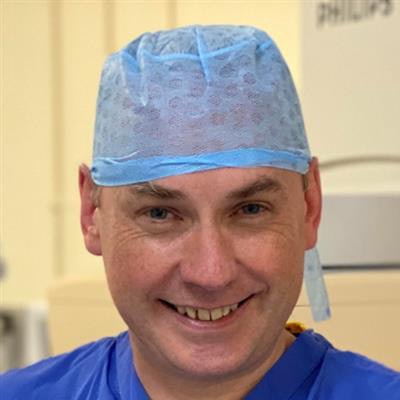
It's Thursday morning in late 1999, a grey gloomy day in London, the clouds heavy with the threat of another grimy shower. The celebrations of the forthcoming millennium seem a long way off, tainted by the fact that I will be on-call for it, and by an ongoing row stoked by the right-wing press about whether U.K. National Health Service staff working New Year's Eve should be entitled to a millennium bonus.
 Dr. Chris Hammond.
Dr. Chris Hammond.In an anonymous meeting room -- bright with fluorescent light beneath the ubiquitous suspended white plastic tile ceiling -- a team is gathering. Many hold coffee in a paper cup or arrive still in their overcoat, damp from the drizzle or the absorbed perspiration of the underground commute. Some are glad to be there, happy to have a temporary break from the monotony of another ward round and the jobs list. Some are perhaps frustrated; they would rather be operating. Some are anxious; they have a presentation to give.
Seats are taken. Plastic chairs rattle as they are removed from a stack and scraped across the linoleum flooring. As with any such meeting, at any time in history and anywhere in the world, the unwritten hierarchy becomes manifest. Juniors at the back. Senior staff at the front. At precisely 8:07, the meeting is called to order. The bimonthly neurosurgery audit meeting has begun.
A latecomer arrives. It's a junior doctor, and a mere moment of disapproving glances is enough though for them to know their card is marked. I'm glad it's not me this time. There is a spare seat at the front. They make their way to the back and stand.
Moment of enlightenment
This then is the unlikely setting for one of the most formative and enlightening moments of my career.
The theme for the morning is head injury. There is a useful educational session on different kinds of intracranial hemorrhage and how to distinguish them given by one of my junior colleagues. It is well received, with murmurings of assent from the front of the room.
The professor then stands up. He gives a talk about invasive measurement of the pH in an injured brain and using it as a guide to alter management. It's very complicated. There are lots of slides and graphs. There is then a lengthy discussion at the front about which part of the brain the probe should be inserted into, when, and what to do with the results. I'm lost and my attention drifts.
Then an anaesthetist registrar (a midranking hospital doctor) stands up. He's nearly finished his training -- "cooked" in the slang -- and will be a consultant (senior doctor) soon.
The registrar seems unbowed by the situation. His presentation is brief and simple. It's about oxygenation in patients with head injury on the high dependency unit. His audit occurred almost contemporaneously with the professor's study on pH. The summary: We are not very good at maintaining oxygenation and poorer oxygenation is associated with poorer outcomes.
He sits down. Then... nothing. There is none of the animated discussion the professor's talk stimulated, no discussion of how we might do this simple thing better, of what that might need. The anaesthetist does not seem surprised at this. Perhaps he's been here before. But I'm amazed. The juxtaposition between the two presentations could not have been starker. The interest was all in the complex, experimental, and at best marginally beneficial intervention rather than the ensuring of simple, established best practice.
I think about asking a question, but I decide not to; it seems unwise. I still have a few months to go before the February changeover and I am interested in neurosurgery as a career. I may need a reference and am not sure how the question will land. I do ask my supervising consultant about it later. He's a thoughtful man, for whom I'd developed a lot of respect. He'd made the same observation, but he decided (as I did) that the social circumstances of the meeting precluded a wider discussion about how we were not getting the basics right.
This event made a deep impression on me. I can still recall my incredulity, bordering on anger. It may be that this was misplaced. Perhaps substantial effort had been made to address the oxygenation of head-injured patients over the years. Maybe there was the desire to just discuss something new, rather than something perhaps well-known and difficult. Something that had been discussed on many occasions before my arrival and would be again, long after I had left. But whatever had been tried, the audit suggested it wasn't working.
I am reminded of this episode by a friend who I met years later by chance in Barcelona. I was there for an interventional radiology conference. He was there for a conference on respiratory medicine. He described a lecture on checkpoint inhibition in lung cancer chemotherapy to a packed auditorium -- standing room only, people sitting on the steps of the aisles in concentrated attention. This was immediately followed by another in the same hall for which only a handful of the audience remained, the rest trooping out as the moderator protested. The topic of the second lecture was helping people to stop smoking.
Get the basics right. They are necessary and are often sufficient. The rest can follow.
Dr. Chris Hammond is a consultant vascular radiologist and clinical director for radiology at Leeds Teaching Hospitals NHS Trust, Leeds, U.K.
The comments and observations expressed herein do not necessarily reflect the opinions of AuntMinnieEurope.com, nor should they be construed as an endorsement or admonishment of any particular vendor, analyst, industry consultant, or consulting group.


